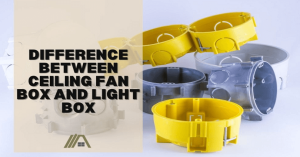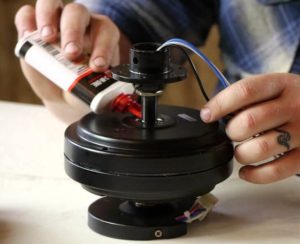Most ceiling fans have the ability to spin in both clockwise and counterclockwise directions. However, it’s important to note that you can’t just choose any direction and turn the fan on. The direction in which the fan rotates will determine whether you feel a cooling breeze or experience no noticeable air movement when it spins in the opposite direction.
If you have recently installed a new fan or are unfamiliar with a particular building, you may not be sure about the current direction of your fan’s rotation. Thankfully, checking the direction is a simple task if you know what to look for.
When the blades of a ceiling fan rotate clockwise (from left to right), it is referred to as the winter mode. In this mode, the fan pulls the air upwards, displacing the warm air that accumulates near the ceiling. To verify the fan direction, you can visually observe the spin direction of the blades, check the blade angle, and ensure that there is no noticeable air movement caused by the fan.
Clockwise Rotation is Typically Given to Winter Mode
The typical configuration for winter mode in ceiling fans involves a clockwise blade rotation. This design is intended to pull air up, making it ideal for colder months. The purpose of this mode is to draw cold air from the occupied space and displace the warmer air that accumulates near the ceiling. As a result, the warmer air is distributed throughout the room.
It’s important to note that only ceiling fans with reversible spin direction capability will offer this winter mode. If a fan has only one option, it will likely be counterclockwise rotation, which is suitable for summer mode.
In some cases, you may encounter a fan with a design where counterclockwise rotation pulls air up and clockwise rotation pushes air down. In such instances, you will need to seek alternative confirmation regarding the intended mode of operation.
3 Methods to Confirm Clockwise Rotation
1. Visual Confirmation
While determining clockwise rotation can sometimes be challenging due to viewing angles and speed, there is a method to visually confirm it.
For visual confirmation, set the fan to its slowest speed setting, allowing the blades to be clearly visible. Stand directly beneath the fan and look up. If the blades are moving from left to right, then the fan is rotating clockwise.
This visual confirmation technique helps you to ensure that the fan is indeed spinning in the clockwise direction, indicating that it is most likely in winter mode. However, in the rare case that you have a fan with unconventional rotation “backward”, additional checks may be needed.
2. Check the Blade Pitch
Ceiling fan blades have a pitch or angle that allows them to direct air either upward or downward. To confirm clockwise rotation, it’s important to understand how the blade pitch influences the airflow. Here’s a simple visualization trick to help:
- Extend both hands with your palms facing down and fingertips touching.
- Tilt your right hand at a 45° angle, positioning your wrist higher than your fingers.
- After that, move your left hand forward towards your right hand.
- Notice how the fingers of your left hand slide up the back of your right hand and into the space above your hands. This simulates the airflow when the lowest point of the fan blade leads.
Turn off your fan and observe the blades. Determine which side of the blade is lower and remember that a fan in winter mode should rotate so that this side of the blade goes first. Then, switch on the fan at the lowest speed setting and confirm if it aligns with the clockwise = winter mode standard.
3. Confirm The Absence of Airflow
Ceiling fans operating in winter mode with clockwise rotation should not generate noticeable airflow below the fan. The intention is for the fan to gently scoop up air to displace the warmer air above it, resulting in a gentle cascade of air downwards into the room.
To verify if the fan is in winter mode, set it to the highest speed setting. If you do not feel a significant airflow coming down onto you, it indicates that the fan is likely in winter mode. If you had previously established that the fan is turning clockwise, this confirmation assures that your fan aligns with the standard winter mode configuration.



